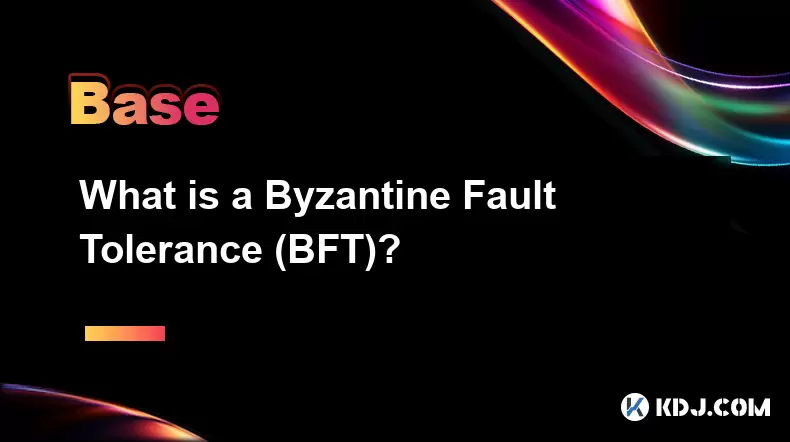-
 Bitcoin
Bitcoin $109,459.7682
2.44% -
 Ethereum
Ethereum $2,598.6052
6.29% -
 Tether USDt
Tether USDt $1.0003
0.00% -
 XRP
XRP $2.2734
3.95% -
 BNB
BNB $661.4886
1.58% -
 Solana
Solana $155.4825
4.35% -
 USDC
USDC $0.9999
-0.02% -
 TRON
TRON $0.2838
1.04% -
 Dogecoin
Dogecoin $0.1740
8.25% -
 Cardano
Cardano $0.6047
9.04% -
 Hyperliquid
Hyperliquid $40.2302
6.50% -
 Sui
Sui $2.9863
10.05% -
 Bitcoin Cash
Bitcoin Cash $509.5786
0.60% -
 Chainlink
Chainlink $13.8156
6.03% -
 UNUS SED LEO
UNUS SED LEO $9.0142
0.69% -
 Avalanche
Avalanche $19.0337
8.68% -
 Stellar
Stellar $0.2438
5.17% -
 Toncoin
Toncoin $2.9012
3.59% -
 Shiba Inu
Shiba Inu $0.0...01210
6.20% -
 Litecoin
Litecoin $90.0882
7.05% -
 Hedera
Hedera $0.1597
8.53% -
 Monero
Monero $326.3340
2.88% -
 Polkadot
Polkadot $3.6365
9.32% -
 Bitget Token
Bitget Token $4.6162
2.72% -
 Dai
Dai $1.0001
0.00% -
 Ethena USDe
Ethena USDe $1.0002
-0.01% -
 Uniswap
Uniswap $7.6403
10.47% -
 Pepe
Pepe $0.0...01060
12.03% -
 Aave
Aave $281.3664
7.56% -
 Pi
Pi $0.4992
1.76%
What is the Travel Rule in crypto?
The Travel Rule requires VASPs to share user identity and transaction details for crypto transfers above $1,000 to prevent money laundering.
Jul 03, 2025 at 10:28 am

Understanding the Travel Rule in Cryptocurrency
The Travel Rule is a regulatory requirement initially introduced by the Financial Action Task Force (FATF) for traditional financial institutions. It has since been extended to cryptocurrency transactions, especially those involving Virtual Asset Service Providers (VASPs). The core purpose of this rule is to enhance transparency and combat illicit financial activities such as money laundering and terrorist financing.
In the context of crypto, the Travel Rule mandates that when a transaction exceeds a certain threshold—often set at $1,000 or €1,000—the originator's personally identifiable information (PII) and the beneficiary's details must be attached to the transaction. This includes full name, account number, physical address, and sometimes even date of birth.
Who Is Affected by the Travel Rule?
- Crypto exchanges and wallet providers are primarily affected by the Travel Rule.
- Peer-to-peer platforms may also fall under its scope if they facilitate transactions above the specified limit.
- Decentralized finance (DeFi) protocols are increasingly scrutinized, although compliance remains a challenge due to their permissionless nature.
For VASPs, non-compliance can lead to regulatory penalties, operational restrictions, or even loss of licensing in jurisdictions where crypto businesses operate under formal supervision.
How Does the Travel Rule Apply to Blockchain Transactions?
Unlike traditional banking systems where transactions carry metadata about sender and receiver, blockchain transactions typically lack embedded PII. This poses a significant technical challenge because blockchain networks like Bitcoin and Ethereum were not originally designed to transmit additional data alongside value transfers.
To comply with the Travel Rule, VASPs must implement off-chain communication mechanisms to exchange required information between counterparties. Solutions include using inter-VASP messaging protocols, such as the IVMS 101 standard, which structures the necessary data fields for secure transmission.
Implementation Challenges for Crypto Platforms
- Privacy concerns: Users often choose crypto for its pseudonymous nature. Collecting and transmitting personal data contradicts this expectation.
- Technical limitations: Blockchains don't natively support attaching metadata to transactions, requiring external infrastructure.
- Cross-border inconsistencies: Different jurisdictions interpret and enforce the Travel Rule differently, creating compliance complexity for global platforms.
- Operational costs: Implementing compliant systems requires investment in software, personnel training, and integration with existing KYC/AML frameworks.
Some platforms have opted for centralized transaction relays or layer-two solutions to handle data transfer securely without altering the underlying blockchain protocol.
Tools and Standards Facilitating Compliance
To meet Travel Rule obligations, many crypto service providers adopt standardized frameworks:
- IVMS 101 (InterVASP Messaging Standard): Defines how VASPs should format and exchange transaction-related user data.
- TRP (Travel Rule Protocol): A decentralized solution enabling encrypted peer-to-peer communication between VASPs.
- Shyft Network and Chainalysis: Third-party services offering compliance tools for identity verification and data sharing.
These tools help automate the collection, validation, and transmission of required user information while ensuring data privacy and encryption standards are maintained.
Frequently Asked Questions
Q: Can users bypass the Travel Rule by splitting transactions?
A: While technically possible, VASPs are expected to monitor for structuring behavior—breaking large transfers into smaller ones to evade reporting. Many platforms use transaction monitoring tools to detect and flag such patterns automatically.
Q: Does the Travel Rule apply to stablecoins?
A: Yes, if the stablecoin qualifies as a virtual asset and the transaction exceeds the applicable threshold. Stablecoin transfers through regulated VASPs must include the same level of identifying information as other crypto assets.
Q: How do decentralized wallets handle the Travel Rule?
A: Decentralized wallets generally do not enforce the Travel Rule unless integrated with a regulated VASP. However, some custodial wallets and hybrid models now incorporate compliance features like on-chain tagging or KYC-linked addresses.
Q: Are NFT transfers subject to the Travel Rule?
A: If an NFT is classified as a virtual asset and the transaction involves a VASP, then yes. Jurisdictions vary on NFT classification, but FATF guidelines suggest they may fall under the scope depending on their use case and liquidity.
Disclaimer:info@kdj.com
The information provided is not trading advice. kdj.com does not assume any responsibility for any investments made based on the information provided in this article. Cryptocurrencies are highly volatile and it is highly recommended that you invest with caution after thorough research!
If you believe that the content used on this website infringes your copyright, please contact us immediately (info@kdj.com) and we will delete it promptly.
- Altcoin Alert: Binance Listings and the Wild West of Crypto
- 2025-07-03 14:30:11
- Decentralized Stablecoins in 2025: Challenging Centralized Counterparts?
- 2025-07-03 14:30:11
- Meme Coin Mania: Is BTC Bull the Next Big Thing in a Limited Time BTC Bull Run?
- 2025-07-03 12:30:11
- Bitcoin Soars to $109,000: What's Fueling the Crypto Rally?
- 2025-07-03 10:30:13
- Hong Kong: Racing to Be the World's Tokenization Hub
- 2025-07-03 14:50:11
- Splatterhouse Rocks Retro Scene: A UK Magazine Deep Dive
- 2025-07-03 12:30:11
Related knowledge

What is open interest in derivatives?
Jul 03,2025 at 02:49pm
Understanding Open Interest in DerivativesOpen interest is a critical metric used in the cryptocurrency derivatives market, particularly when analyzing futures and options contracts. It represents the total number of outstanding contracts that have not been settled or closed by either party involved. Unlike trading volume, which counts all trades made i...

What is a liquidation cascade?
Jul 03,2025 at 07:15am
Understanding the Concept of LiquidationIn the realm of cryptocurrency trading, liquidation refers to the process by which a trader's position is automatically closed due to insufficient funds to maintain the leveraged trade. This typically occurs when the market moves against the trader's position and their account equity falls below the required maint...

What is a hard fork coordinator?
Jul 03,2025 at 12:42pm
Understanding the Role of a Hard Fork CoordinatorIn the world of blockchain and cryptocurrencies, a hard fork coordinator plays a critical role during major network upgrades. A hard fork is a significant change to a blockchain’s protocol that makes previously invalid blocks or transactions valid (or vice versa). This type of upgrade requires all nodes o...

What is a Byzantine Fault Tolerance (BFT)?
Jul 03,2025 at 11:49am
Understanding the Concept of Byzantine Fault ToleranceByzantine Fault Tolerance (BFT) is a critical concept in distributed systems, particularly within the realm of blockchain technology and cryptocurrencies. It refers to the ability of a system to continue functioning correctly even when some components fail or behave maliciously. The term originates f...

What is a subDAO?
Jul 03,2025 at 09:36am
Understanding the Concept of SubDAOA SubDAO, short for Sub-Decentralized Autonomous Organization, is a specialized entity that operates under the umbrella of a larger DAO (Decentralized Autonomous Organization). It functions with its own set of rules, governance mechanisms, and tokenomics while remaining aligned with the overarching goals of the parent ...

What is the Travel Rule in crypto?
Jul 03,2025 at 10:28am
Understanding the Travel Rule in CryptocurrencyThe Travel Rule is a regulatory requirement initially introduced by the Financial Action Task Force (FATF) for traditional financial institutions. It has since been extended to cryptocurrency transactions, especially those involving Virtual Asset Service Providers (VASPs). The core purpose of this rule is t...

What is open interest in derivatives?
Jul 03,2025 at 02:49pm
Understanding Open Interest in DerivativesOpen interest is a critical metric used in the cryptocurrency derivatives market, particularly when analyzing futures and options contracts. It represents the total number of outstanding contracts that have not been settled or closed by either party involved. Unlike trading volume, which counts all trades made i...

What is a liquidation cascade?
Jul 03,2025 at 07:15am
Understanding the Concept of LiquidationIn the realm of cryptocurrency trading, liquidation refers to the process by which a trader's position is automatically closed due to insufficient funds to maintain the leveraged trade. This typically occurs when the market moves against the trader's position and their account equity falls below the required maint...

What is a hard fork coordinator?
Jul 03,2025 at 12:42pm
Understanding the Role of a Hard Fork CoordinatorIn the world of blockchain and cryptocurrencies, a hard fork coordinator plays a critical role during major network upgrades. A hard fork is a significant change to a blockchain’s protocol that makes previously invalid blocks or transactions valid (or vice versa). This type of upgrade requires all nodes o...

What is a Byzantine Fault Tolerance (BFT)?
Jul 03,2025 at 11:49am
Understanding the Concept of Byzantine Fault ToleranceByzantine Fault Tolerance (BFT) is a critical concept in distributed systems, particularly within the realm of blockchain technology and cryptocurrencies. It refers to the ability of a system to continue functioning correctly even when some components fail or behave maliciously. The term originates f...

What is a subDAO?
Jul 03,2025 at 09:36am
Understanding the Concept of SubDAOA SubDAO, short for Sub-Decentralized Autonomous Organization, is a specialized entity that operates under the umbrella of a larger DAO (Decentralized Autonomous Organization). It functions with its own set of rules, governance mechanisms, and tokenomics while remaining aligned with the overarching goals of the parent ...

What is the Travel Rule in crypto?
Jul 03,2025 at 10:28am
Understanding the Travel Rule in CryptocurrencyThe Travel Rule is a regulatory requirement initially introduced by the Financial Action Task Force (FATF) for traditional financial institutions. It has since been extended to cryptocurrency transactions, especially those involving Virtual Asset Service Providers (VASPs). The core purpose of this rule is t...
See all articles

























































































